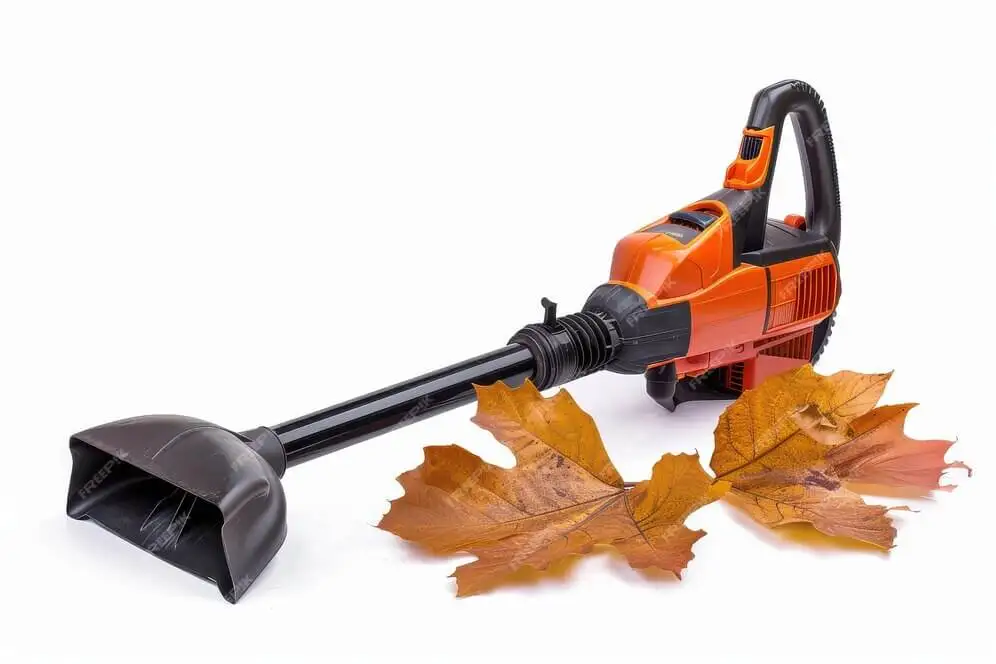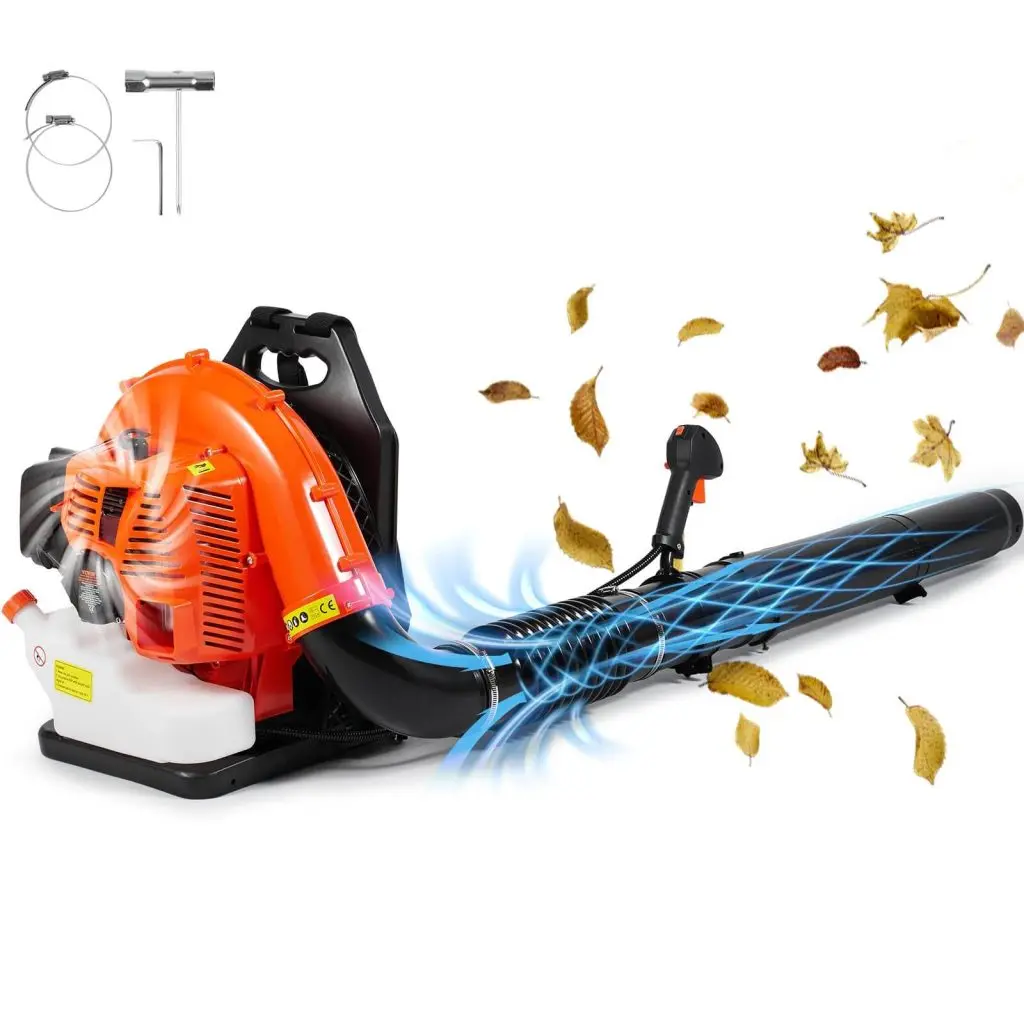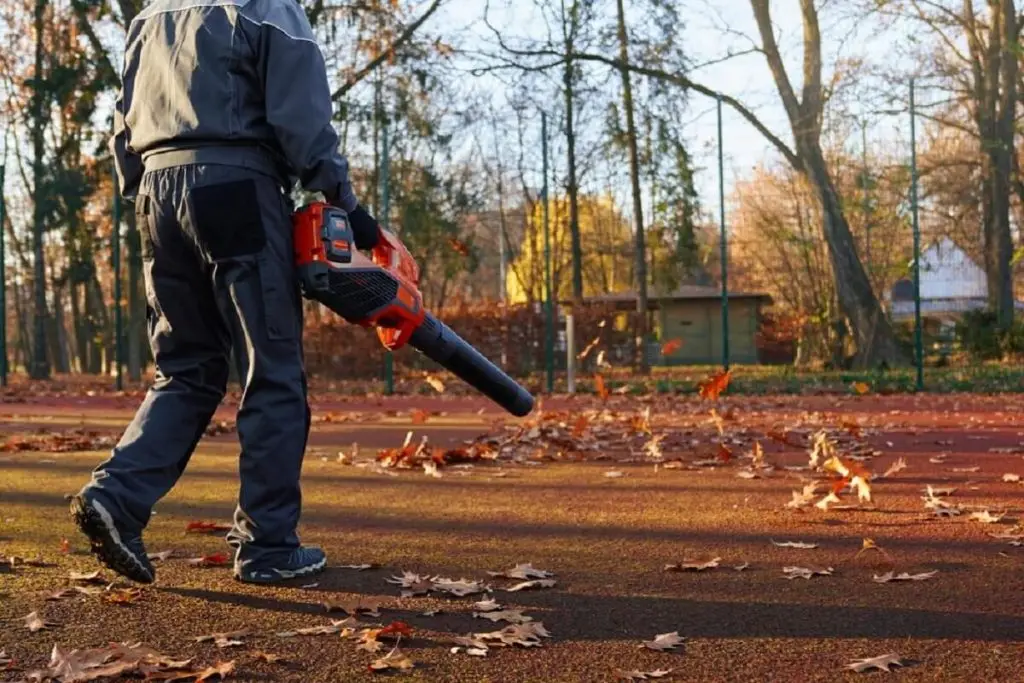When selecting a specific model, one must be aware of certain characteristics of a leaf blower. Some of the most common measurements you will come across include CFM (cubic feet per minute) and MPH (miles per hour). These numbers may look a bit absurd, but these are all crucial in determining how efficient a certain leaf blower model would be.
Whether you are responsible for mowing a small lawn or a professional working with large territories, getting acquainted with the difference between CFM and MPH will be useful.
In this article, we will discuss CFM and MPH in detail, understand how they influence a leaf blower’s efficiency, and figure out whether there is a more important factor for your Usage.
We will also showcase that all the leaf blowers from VEVOR are optimized for both metrics and provide powerful and efficient tools for each job.
Table of contents
Understanding Leaf Blowers CFM vs MPH: What Do They Mean?
What is CFM?
CFM is a unit used to determine how much volume of air a leaf blower can throw in a minute. See it like the force behind the nozzle of the leaf blower; again, the higher the CFM, the more air moved is voluminous, particularly helpful for massive piles of leaves and dense objects.
It is most crucial when one is required to disseminate a lot of material over an extensive coverage area. For instance, if you were dealing with wet leaves and sands or other tasks that require more force, then a high CFM leaf blower will be easier to handle. It enables the blower to deliver more air volume, thereby collecting more leaves faster and in a more efficient manner.
More to this, higher CFM is also necessary for clearing large areas. For example, if it is a large yard or trees growing on a large property, you will need a blower that will quickly blow a good of air.
What is MPH?
MPH, or Miles per Hour, measures the air’s speed from the leaf blower. While CFM tells you how much air is being moved, MPH indicates how fast that air travels. This is important for tasks that require a strong, concentrated airflow to move stubborn debris.
MPH is crucial when you need to focus on precision. For instance, if you’re blowing leaves off a driveway, walkway, or other hard surfaces, a high MPH will help lift and push the leaves more effectively. The faster the air moves, the more force it can exert on the leaves, making it easier to clear them away.
A higher MPH is also useful for tackling lighter, dry leaves. These can be easily scattered with a powerful gust of air, making a high MPH blower ideal for quick, focused tasks.
CFM vs MPH: Which is More Important?

When should CFM be in a leaf blower?
CFM should be your focus when it comes to large spaces or when there is heavy and wet material to be cleared. In such instances, the amount of air that the blower is capable of moving is more essential than the velocity of the air. This high CFM blower can effortlessly remove huge amounts of fallen leaves, wet grass, or even light snow.
For instance, if you have a big yard with many trees in the backyard that shed lots of leaves, it will be much easier and faster to clear them if you use a blower with high units per minute airflow. Likewise, if the leaves are wet or compacted and must be moved out of the way, a blower with a high CFM will work better.
VEVOR’s leaf blowers excel in CFM output, offering models with impressive air-moving capabilities. Their backpack blowers, for instance, can deliver CFM ratings that are ideal for heavy-duty tasks, making them perfect for professional landscapers or homeowners with large properties.
When should MPH in a leaf blower be prioritized?
On the other hand, MPH is more critical when you need to focus on precision tasks or clear, lightweight debris quickly. A higher MPH might be more beneficial if your main concern is blowing leaves off a small lawn, driveway, or patio. The speed of the air will help lift the leaves and debris, pushing them where you want them to go with greater accuracy.
For instance, if you’re working in a small, confined space where you need to control the direction of the debris, a high MPH blower will give you the precision you need. It will also help when you’re dealing with dry leaves that don’t require a lot of force to move but need to be directed in a specific way.
VEVOR leaf blowers also perform well in MPH, offering models that can deliver a strong, focused airflow. This makes them versatile tools for handling various tasks, from small yard cleanups to more detailed work.
Finding the Perfect Balance: CFM and MPH Together
Although there is some merit in CFM and MPH, the most efficient machine combines the two factors effectively. CFM decides general airflow, whereas MPH describes the rate of the airflow. Altogether, they form one perfect set of functions that make the application a powerful tool for solving numerous tasks.
When selecting the type of leaf blower, it is always advisable to consider the exact task it will be used for most frequently. In terms of high CFM needs, they should be a priority, especially for applications that require large coverage areas. If you are looking for high levels of detailed tracking, MPH is the way to go. Or, if you need output at both low and high-pressure settings, seek a blower that provides both equally.
This seems to be the case with VEVOR’s leaf blowers, which have high CFM and MPH models. This makes general-purpose machines well-suited for tasks ranging from lawn cleaning to performing intricate operations within or around the home or compound.
VEVOR’s leaf blowers are designed to provide this balance, with models that offer both high CFM and high MPH. This makes them versatile tools that can handle everything from large yard cleanups to detailed work around your home or property.
Additional Factors to Consider When Choosing a Leaf Blower

Power Source: Gas vs Electric vs Battery
The other factor that one should consider when buying the leaf blower is the power source. Gas-powered blowers are portable but produce high emissions, while electric ones are environmentally friendly and may require extension cords or outlets to operate.
The gas-powered leaf blowers are usually the most powerful in terms of CFM and MPH, thus suitable for large yards or commercial use. But they also have comparatively greater weights and loud noises and need frequent care. A gas-powered model might be the favorite if you require a potent blower for difficult operations.
Electric models are also easier to use for long hours than gas models because they are lighter and less noisy. Their CFM and MPH ratings are generally quite good, especially when they’re connected to a power outlet, but the rope is short. These blowers are ideal for usage in small to medium yards where power supply outlets are easily accessible.
Battery-powered models are the most convenient and flexible and enable movement without hindrance from cords or gasoline. Compact battery blowers can have high CFM and MPH, but are likely to have a shorter run time than gas or corded blowers.
Noise Levels and User Comfort
Another factor that requires focusing on is noise levels of a particular model of the leaf blower. Higher CFM and MPS leads to more noise production, and this can be an inconvenience if one resides in a quite area or has hearing problems. The recent gas-powered blowers can be very noisy than the electric and battery-powered models.
Deciding on the right leaf blower should be done with noise level in mind especially if the blower will be used for several hours. Some versions contain noise reduction factors that can reduce the effect and thus, are easier to use.
VEVOR has concentrated its efforts in developing powerful leaf blowers with relatively low noise. Some of their models are made in a way that the user will not cause any inconvenience to others as he uses the models.
Weight and Portability
The mass of a given leaf blower plays a significant role in the ease of usage, particularly while operating for longer durations. While heavier models may provide more power, mobility can be an issue when it comes to having to move around a large area.
When it comes to the selection of a preferred leaf blower, the weight is an important factor that influences the effectiveness of the tool. It is sometimes possible to get a backpack blower where the weight is better distributed; hence it does not exert as much pressure on the body for longer use.
While the larger models have to maneuver on wheels, the handheld models can be maneuvered easily, but they might not pack the power of a larger model.
Recommended For Your Project
Why Choose VEVOR Leaf Blowers?

The VEVOR branded leaf blowers are well crafted and are some of the best ones in the market. Being CFM and MPH equipped, the leaf blowers provided by VEVOR are easily the best of both worlds. Regardless of the size of your yard that requires blowing, we have a VEVOR blower that will suit your needs.
A common advantage that users can note from VEVOR’s series of leaf blowers is the excellent combination of both the CFM and MPH. Such a balance means that the garbage truck belongs to you, the operator, while its speed is helpful when you need to navigate it at close range. VEVOR blowers are made with a lot of quality hence they offer an excellent service for years.
Feedback on VEVOR’s leaf blowers from customers is entirely positive; people like the force, sturdiness, and simplicity of the machines. Whether for commercial green space maintenance or for personal use in maintaining one’s yard, VEVOR has the right leaf blowers for the job.
FAQs about MPH vs CFM Blower
Which is better: CFM vs MPH blower?
CFM and MPH are important, but the best choice depends on your specific needs. CFM is better for moving large amounts of debris, while MPH is better for precision tasks.
Can a leaf blower have high CFM and MPH?
Yes, some leaf blowers offer a good balance of high CFM and MPH, providing powerful and versatile performance.
How do CFM and MPH work together?
CFM and MPH work together to determine the overall effectiveness of a leaf blower. CFM measures the volume of air moved, while MPH measures the speed of that air. Together, they determine how much debris can be moved and how quickly.
Final Thoughts
Understanding the difference between CFM and MPH is crucial when choosing a leaf blower. Both metrics play a key role in determining how well a blower will perform, and the best choice depends on your specific needs. For large areas and heavy debris, prioritize CFM. For precision tasks and lightweight debris, prioritize MPH.
VEVOR’s leaf blowers offer a perfect balance of CFM and MPH, making them an excellent choice for homeowners and professionals. With their powerful performance, user-friendly design, and positive customer reviews, VEVOR’s leaf blowers are a reliable choice for any yard work task. Whether you need to clear leaves, grass, or debris, VEVOR has the right tool for the job.





